| Indiana County "All-In" on Efficiency in Emergencies | | Embraces SafetyScan Codes to Inform Affordably |  | | Shelby County Health Department's Sandra Hall & Michelle Lovitt (L/R) | SHELBYVILLE, IN: A technology that originated in the auto industry is proving itself an able ally for safety professionals. The humble “QR (Quick Response) Code,“ invented to keep inventory in line, is now helping manage public information when disasters loom.
One Indiana County has taken the lead, road-testing the technology. Shelby County, south of Indianapolis, launched their SafetyScan Service in time for the 2024 solar eclipse, when sun seekers flooded Central Indiana roadways. Drivers were encouraged to scan the QR code to instantly hear updated traffic and travel information designed to avert calamities. Health Department spokespersons Sandra Hall and Michelle Lovitt simulcast the program over an Information Radio Station with enhanced coverage allowances, so the content was available county-wide on conventional radio as well. Now the department is distributing the QR code at events, printed on a novel keychain-attached cellphone cleaner/stand. Since most people know where their car keys are, Sandra tells The Source she hopes they will be able to find the code when they need it. It is also printed on the Agency's business cards.
SafetyScan Service utilizes Information Station Specialists’ StreamCAST technology to push the program to mobile phones and to links on any device with a web interface. The content can be updated by Shelby County staff at any time and includes automatic NOAA All-Hazard interruptions when situations warrant it. General agency information can be heard when emergencies aren’t imminent.
SafetyScan advantages: 1) low cost to the host agency, 2) a minimal hardware requirement, 3) no software leases, 4) QR Codes are universally familiar to the public and 5) prior opt-in is not required. Options permit Amazon Alexa access, audio recording assistance, remote siting for resilience.
In an era of tightening budgets, a scalable program like SafetyScan can keep citizens “informed affordably.” | 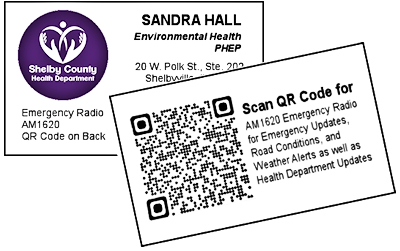 | | QR Codes on Shelby County Business Cards and Smartphone Keychains. | 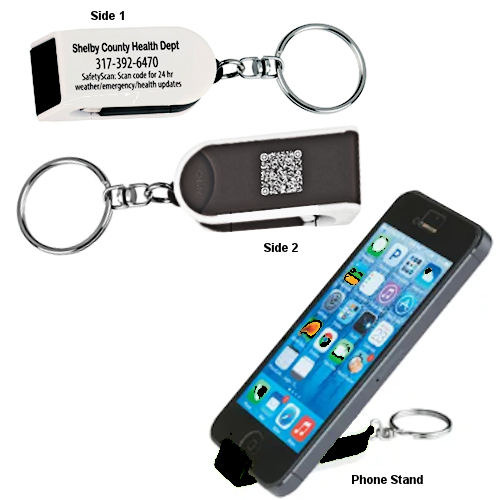
|
| | EDITORIAL | 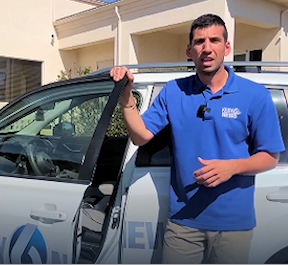 | | Dylan Foreman of KSBY TV Santa Barbara Reports on His County's Emergency Radio Stations | | Will A.I. perform at crunch time? | LOS ANGELES, CA: Will the public trust A.I.-generated emergency notifications when it counts? The answer may depend on just where they live. In the Los Angeles area, which recently experienced the tragic fires, and in the Eastern US, which suffered through hurricanes Helene and Milton (The Source, Fall Issue), the jury may still be out.
On the ground in LA, Kort Waddell told The Source, “People are being told one thing, then another. Emergency cellphone alerts are going rogue." Not a confidence-builder, to be sure. Residents must trust public authorities with their lives when crises arrive at their doorsteps.
Into this arena rides a new breed of notification systems marshalled by Artificial Intelligence (AI). Questions abound: Will we trust A.I. systems to direct us to safety? What happens if the Internet is offline? What about protection of sensitive data? Will an evacuation system powered by A.I. fairly address all populations at risk, or will it have to prioritize? Artificial Intelligence offers the real potential to streamline notification processes, but will it do so with the experience and wisdom of a human emergency manager? And if it gets it wrong, who is to blame?
But alas, the horse is already out of the barn. The next time you are notified of an emergency, odds are A.I. will already have had a role in crafting the communication. A quick scan of FEMA’s website details how the Agency routinely uses A.I. now "in its day-to-day activities to help people before, during, and after disasters.”
Meanwhile, the public jury is not just “out.” It may have already been dismissed. National surveys indicate a deep distrust in the reliability of Artificial Intelligence. (Google “Distrust of Artificial Intelligence” to see the growing list of research studies by universities such as MIT, Harvard and others.) Fueling the unease: a recent New York Times article stating that the newest A.I. “reasoning” systems are producing more – not less – incorrect information, referred to as “hallucinations.” The article asserts that even the companies that create the A.I. tools don’t understand why that’s happening.
But the public demands accuracy and clarity – not uncertainty – when an emergency is at hand. That likely explains the explosion of interest in Emergency Information Radio Systems by communities around Los Angeles, some of which personally experienced the recent chaos. Nearby Santa Barbara County (KSBY story) installed six Emergency Information Radio systems in preparation for the eventuality. Many other counties and cities are adding or upgrading their stations. Radio was the first tool of telecommunications and now it’s the last one standing that affords local officials the ability to talk directly to citizens, without relying on third party points-of-failure like cell towers, the internet or an "A.I. Assistant." Like the old-school “can-and string” example, local radio allows emergency managers control of both cans … and the string too.
See "Communities Aim to Be 'Radio Ready' before the Next Round," The Source. | | CAPTIOL HILL UPDATES | "AM in Every Vehicle Act" Has Majority Support in Both Houses: Per Congress.gov, the "AM Radio for Every Vehicle Act" of 2025 now has majority support in the House of Representatives (HR 979). The Senate version of the bill (S 315) already has gained a filibuster-proof majority. The bill's bipartisan support includes the backing of 122 Republicans and 106 Democrats. The next hurdle is passage by the House Energy and Commerce Committee. What would the Act do? Ensure drivers have access to AM broadcast radio, which provides essential news and emergency information during times of crises, more important than ever with multiple international crises looming. Take action: Make your voice heard! Tell Congress to bring the "AM Radio for Every Vehhicle Act" to the floor for a vote now.
This Fox 13 Seattle interview mentions an inexpensive device automakers could use to eliminate AM interference in new electric vehicles.
|
| | Weather...or Not? | | Local Weather Radio Stations Going Off Line for Updates |  One can understand the National Weather Service (NWS) occasionally must update the management software at more than a thousand of its Weather Radio Stations around the US. One can even understand why each update takes a few days to accomplish. What National Oceanic and Atmospheric Administration (NOAA) has not explained is why it is performing the updates in the teeth of the 2025 tornado season, even as a new hurricane season is ramping up. The “necessary scheduled system updates” to the agency’s control systems began this spring and will last through June according to their website. Multiple stations in a region may go off the air at the same time. The downtime will affect each office’s ability “to display and integrate weather and water information, and to send life-saving information, such as weather and water warnings, to the public.” The outages have come as a surprise to many local emergency managers who have not seen NOAA’s website and social media posts. One can understand the National Weather Service (NWS) occasionally must update the management software at more than a thousand of its Weather Radio Stations around the US. One can even understand why each update takes a few days to accomplish. What National Oceanic and Atmospheric Administration (NOAA) has not explained is why it is performing the updates in the teeth of the 2025 tornado season, even as a new hurricane season is ramping up. The “necessary scheduled system updates” to the agency’s control systems began this spring and will last through June according to their website. Multiple stations in a region may go off the air at the same time. The downtime will affect each office’s ability “to display and integrate weather and water information, and to send life-saving information, such as weather and water warnings, to the public.” The outages have come as a surprise to many local emergency managers who have not seen NOAA’s website and social media posts.
Check with your NWS Forecast Office to see when stations in your area will be affected. |
|
| | Radio Comes Home | | EventCAST Radio Broadcasts for Safety Professionals at Premier HAM Radio Event | 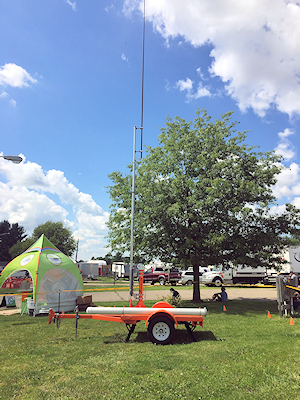 | | Information Radio Station 1620 Portable Antenna System |
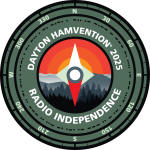 XENIA, OH: So why wouldn’t the world’s premier Amateur Radio Event use radio to reach out to attendees? Actually, they do. For the 7th year, the Dayton Hamvention broadcast to more than 30,000 inbound patrons in May, as they streamed into the Expo Center and Fairgrounds in nearby Xenia for their mega-radio-convention. XENIA, OH: So why wouldn’t the world’s premier Amateur Radio Event use radio to reach out to attendees? Actually, they do. For the 7th year, the Dayton Hamvention broadcast to more than 30,000 inbound patrons in May, as they streamed into the Expo Center and Fairgrounds in nearby Xenia for their mega-radio-convention.
It was Amateur Radio Operators whose innovations launched the entire telecommunications industry more than 100 years ago, and they continue the tradition today. Hamvention General Chairman Brian Markland reminded patrons, “Our 2025 theme, ‘Radio Independence,’ celebrated the freedom and resilience that have always defined amateur radio. Today, we’re fortunate to enjoy the freedom to explore, connect and 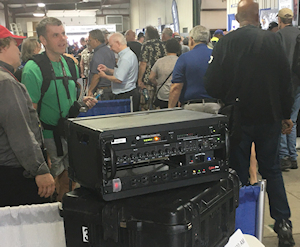 | | EventCAST Radio equipment at Hamvention 2024 |
create without limits.”
That creativity extended to the event’s Information Radio service, as well. The “Hamvention Information Station” program included standard parking and directions plus interviews with the mayor of Xenia, event organizers and patrons as they walked the exhibits. A new tech segment featured answers to “Way too Easy HAM Radio Questions.” The 5-mile EventCAST 1620AM signal blanketed the City of Xenia and nearby areas of Greene County in Ohio. Portable Information Radio services have been utilized by a variety of operators in recent years -- including Grand Canyon National Park, the Indianapolis 500, Oceano Dunes Off-Road Area, Pine Knob Music Theater, Illinois’ Farm Progress Show, multiple air shows and state fairs. More about EventCAST.
“We invite you to reflect on what radio Independence means to you,” Markland added. |
|
|
| Information Radio Stations is a generic term synonymous with Travelers Information Stations (TIS), Highway Advisory Radio Stations (HAR) / Highway Information Systems & Low Power Radio Stations (LPR). Operation of the stations is governed by FCC Part 90.242 Rules. A FCC license is required. Information Radio Stations may be fixed or portable. Subcomponents may include transmitter, antenna and ground system, digital voice player, wattmeter, cabinet with conventional or Corbin locks, lightning arrestors for RF, power and telephone lines, coaxial cable. Most stations employ black maximized antennas to discourage ice accumulation and security measures to prevent unauthorized program access. Options include synchronization, battery backup, solar power, remote programming by local, network or telco, multi-station audio distribution via RF or LAN / WAN or wireless network. |

